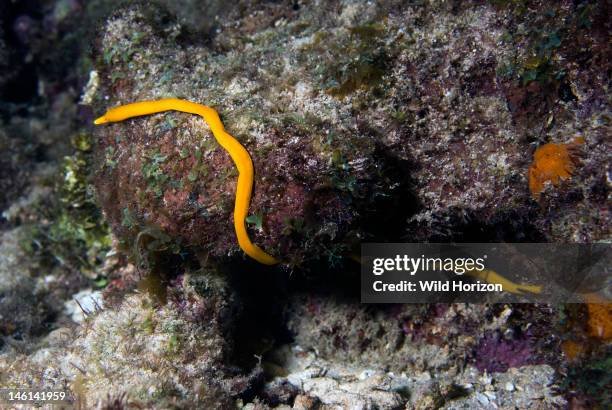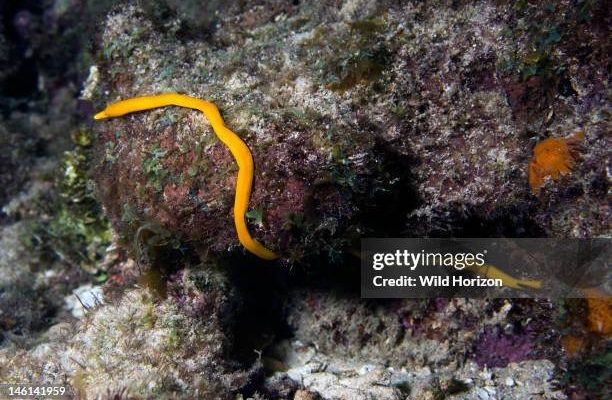
Picture a ribbon worm as a long, squirming piece of spaghetti in the vast underwater world. They can stretch out impressively, sometimes reaching lengths of over a meter. What’s fascinating is that they come in a variety of colors and patterns, often blending seamlessly with their coral surroundings. They’re like the quiet, unassuming helpers of the ocean, contributing significantly to the biodiversity that makes coral reefs so vital.
So, why should we care about ribbon worms? Here’s the thing: these creatures play crucial roles not just in their habitats but also in our understanding of marine biology. Let’s dive deeper into the world of ribbon worms in coral reef systems and explore what makes them so fascinating and important.
What Are Ribbon Worms?
Ribbon worms, scientifically known as *Nemertea*, are a group of invertebrates characterized by their elongated bodies. They can be found in various marine environments, but they thrive particularly well in coral reefs. These worms have a unique way of capturing their prey, often using a specialized organ called a proboscis, which can be elongated and sticky.
You might be wondering how ribbon worms fit into the ecosystem. They are mostly scavengers, feeding on tiny organisms and decomposing matter, thereby helping to clean the reef. They also serve as a food source for several marine predators, meaning they play a critical part in the food web. Understanding their life cycle and behavior can offer insights into the health and stability of coral reef systems.
The Role of Ribbon Worms in Coral Reef Ecosystems
Ribbon worms are not just funky-looking residents of coral reefs; they play essential roles in nutrient cycling. As they feed on organic materials, they break down detritus, recycling nutrients back into the ecosystem. This process supports coral health by promoting the growth of algae and other microorganisms that corals depend on for nourishment.
Moreover, ribbon worms contribute to overall biodiversity. Coral reefs are known for their complex food webs, and ribbon worms fit neatly into this web. By supporting different levels of the food chain, they help to maintain the ecological balance that allows corals and other marine life to thrive.
But it’s not just about what they do for the reef. Ribbon worms also serve as indicators of environmental health. Studies have shown that the presence and diversity of ribbon worms can reflect the overall condition of the coral reef. So, monitoring these worms can help scientists gauge the health of these important ecosystems.
Population Dynamics of Ribbon Worms
Understanding how ribbon worms reproduce and grow is crucial. These worms typically reproduce sexually and can be quite prolific. In ideal conditions, a single ribbon worm can produce a significant number of offspring, ensuring that their populations remain stable.
However, this stability can be threatened. Changes in water temperature, pollution, and habitat destruction can negatively affect their populations. For instance, coral bleaching—a common result of climate change—destroys the habitats that many ribbon worms rely on for survival. This interconnectedness between ribbon worms and coral health highlights the fragility of reef ecosystems.
Additionally, researchers study the population dynamics of ribbon worms to predict how environmental changes might affect coral reefs. By understanding their reproductive cycles and population trends, scientists can work towards conservation strategies that support both ribbon worms and the coral reefs they inhabit.
Challenges Facing Ribbon Worms in Coral Reefs
Despite their resilience, ribbon worms face several challenges. Climate change is at the top of the list, leading to rising ocean temperatures and changing pH levels. These shifts can disrupt the delicate balance of life in coral reefs, affecting everything from coral health to the species that feed on them, including ribbon worms.
Pollution is another significant threat. Chemicals and plastics can accumulate in marine environments, disrupting the life cycles of ribbon worms and other reef inhabitants. Heavy metals and toxins can also enter the food chain, leading to bioaccumulation—a process that can be detrimental to both marine life and humans who consume seafood.
Habitat loss due to human activities, like coastal development and unsustainable fishing practices, also endangers ribbon worms. Coral reefs are often damaged by physical contact from boats or destructive fishing methods, leading to the loss of crucial habitats needed for these and many other marine organisms.
The Fascinating Anatomy of Ribbon Worms
Let’s talk about the cool stuff—like the anatomy of ribbon worms. One of their standout features is their long, slender body structure, which can vary in length and color. Some are brightly colored, serving as a warning to predators, while others might blend in with their surroundings to avoid being eaten.
Their proboscis is particularly interesting. This extendable organ can shoot out to entangle prey, making it a vital tool for hunting. Think of it as a specialized fishing line that helps them catch small fish or other invertebrates. This ability showcases their adaptability and evolution as effective predators in the reef’s bustling ecosystem.
Some ribbon worms even have unique adaptations, like the ability to regenerate lost body parts. If they lose a segment, they can regrow it, which is pretty remarkable. This regenerative ability is something scientists study to learn more about healing processes, which could have applications in medical research.
Why Ribbon Worms Matter to Coral Reef Conservation
When it comes to conservation, understanding ribbon worms is crucial. As indicators of reef health, scientists can monitor their populations to assess the impact of environmental changes. Focusing on the health of these tiny creatures can shed light on larger issues facing coral reefs.
Additionally, protecting ribbon worms means protecting their habitat. Efforts to conserve coral reefs often focus on preserving the delicate balance of life within them. When we consider the importance of ribbon worms, it becomes clear that every organism is interconnected in the web of life.
Moreover, educating the public about these fascinating creatures can inspire greater commitment to marine conservation. When people realize the vital roles ribbon worms play in supporting vibrant coral ecosystems, they may be more inclined to participate in conservation efforts.
Concluding Thoughts on Ribbon Worms in Coral Reefs
Ribbon worms might not be the first creatures you think of when picturing a coral reef, but their impact is undeniable. From contributing to nutrient cycling to serving as indicators of ecosystem health, these slender worms play a critical role in maintaining the delicate balance of reef systems. Considering the challenges they face, it’s crucial for us to understand and protect them.
As we learn more about the interconnectedness of ocean life, we can better appreciate how everything fits together—much like a puzzle. Caring for ribbon worms and coral reefs not only benefits the ocean but also enriches our own lives. So, the next time you think of coral reefs, take a moment to remember the ribbon worms. They may not be as colorful as clownfish, but they certainly deserve our attention!

